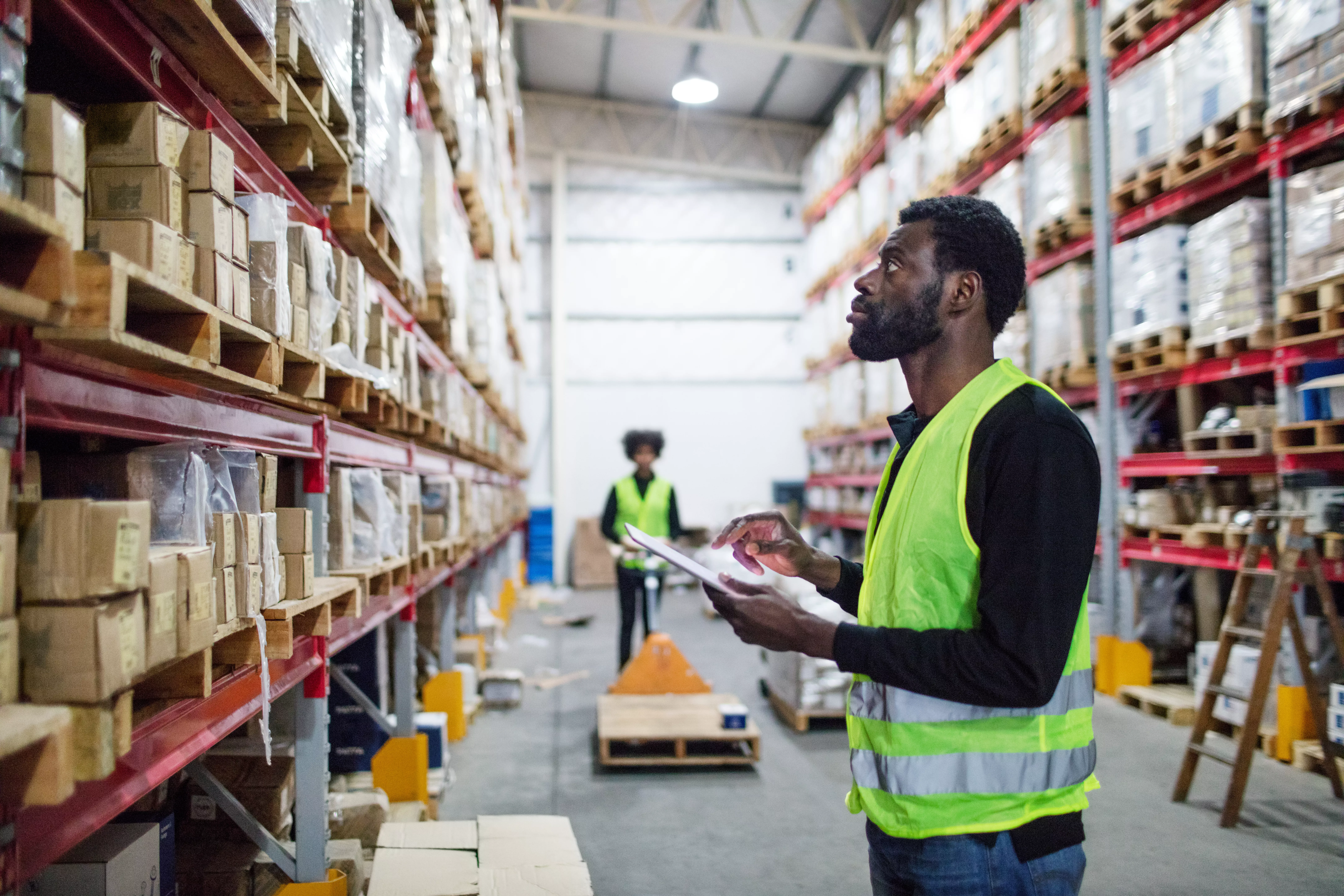The onset of a new era
Before the arrival of COVID-19, cleaning helped warehouses prevent accidents, satisfy inspection standards, and keep operations moving. But with the onset of the pandemic, the implications of cleanliness became far more significant—and cleaning trends changed accordingly.
With business booming as a result of soaring e-commerce demand, safety could easily be compromised at busy facilities, and possibly beyond. According to the European Centre for Disease Prevention and Control, there is evidence that SARS-CoV-2 virus particles can be displaced by air and deposited onto other surfaces 1.
So, the objective was quickly clear: maintain unprecedented hygienic standards in order to protect employees (and those with whom they come into contact) from the risk of infection.

These days, a company’s standard cleaning program plays an important daily role. For example, as outlined by the UK Government’s article, “‘Working safely during COVID-19 in factories, plants and warehouses,” the terms “more enhanced cleaning” and “more frequent cleaning,” along with “cleaning procedures,” are named many times in each key section of the article’s recommendations. The United Nations’ guidance document, “Recommendations and preventive measures in response to COVID-19,” includes several pages that discuss the importance of enhanced, proactive cleaning processes.
Two trends in warehouse cleaning stand out in particular — a new focus on floorcare and a return to basics with dust management. These two areas present tremendous opportunity for improving worker well-being and safety on a facility-wide scale, as well as the ability to improve overall business efficiency and profitability.
“When COVID-19 started, over the course of 60-days, we put in place – and scaled globally – more than 150 major process changes to help ensure our teams stayed safe and healthy while at work.”
– Amazon 2
Trend 1: Focusing on floorcare
Floorcare plays a crucial role in protecting workers. Viruses and other pathogens persist in particles that settle on floors, and shoes are easily contaminated over the course of a workday. Increasing labor availability for floorcare shifts is certainly a viable move. But, because of rising labor costs and a shrinking labor market, maintenance staff must be smart about how they clean more with less. Today, there’s significant focus on ways to increase floor cleaning intervals and introduce technology to clean more effectively, faster.
Another major concern is management of dust, which is quick to accumulate on products and shelving – and which can be contaminated. In addition to the risk dust itself poses, a surface also can’t be properly disinfected if it is covered in dust. Industrial vacuums aren’t new inventions, but dust was often considered less of a risk in the days before the pandemic. Nowadays, vacuuming play a significant role in reducing viral presence by capturing and retaining dust, as well as other particles to which the virus can cling.
Vacuuming will not eliminate hazardous dust or viral particles completely, but it will make it much more difficult for the microscopic particles to enter the air and be inhaled, or transported onto high-touch surfaces.
As such, the solution is simple: strengthen a cleaning program with frequent vacuuming, from floor to ceiling, and sanitation of all contact-prone areas. Employees will appreciate the cleaner conditions, as well as improved air quality, and the knowledge that their employer is paying greater attention to details that make a difference.
Key considerations in equipment selection:
- Powerful suction
- Certified HEPA- or ULPA-filtration systems
- Safety-bag collection to protect the operator during emptying
Cleaning operational changes

High quality/thoroughness of cleaning

Increased/more regular monitoring of cleaning

Increased overall time spent cleaning
Source: Nilfisk Disinfection study 2021. The study was based on an online survey with a total of 609 panel respondents representing different sectors. Base for results referred above was 93 respondents from Warehouse & Logistics sector. All participants were screened for minimum 'shared influence' on cleaning equipment purchase decisions.
Thriving in times of change
The challenges brought by the new normal are extensive, so floorcare and dust-management are only part of a larger whole. The understanding of what constitutes a high standard of clean, and the ability to maintain that standard, are both evolving and adapting for the sake of business, but more so for the sake of staff and customers. This period of evolution isn’t without its challenges, but opportunities for improved cleaning always lead to opportunities for increased success.
Ask about a free cleaning assessment
100,000+ facility managers rely on us to help them identify more effective cleaning procedures and select the right cleaning equipment.


